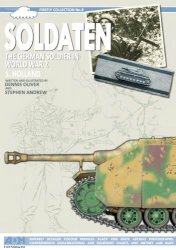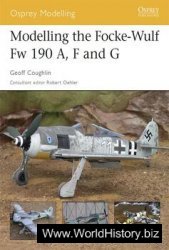A page of drawings by the German artist Albrecht Dürer (1471–1528)
that captures many themes important to Renaissance culture. On the
left, Dürer illustrates a dramatic point in the Greek myth of the rape
of Europa, though he sets it in a landscape with sixteenth-century
towns. On the right, he sketches a classically dressed archer, a sage
contemplating a skull, and three views of a lion. Thus on this one
page he brings together the importance of the classical past, the wisdom
of the ancients, the fleeting nature of human life, the wonders of
the natural world, and the lure of the exotic.
The title of this book , and perhaps also of the course for which you are reading it,
is Early Modern Europe . The dates in the title inform you about the chronological
span covered (1450–1789), but they do not explain the designation “early modern.”
That term was developed by historians seeking to refi ne an intellectual model fi rst devised
during this very period, when scholars divided European history into three parts:
ancient (to the end of the Roman Empire in the west in the fi fth century), medieval
(from the fi fth century to the fi fteenth), and modern (from the fi fteenth century to
their own time). In this model, the break between the Middle Ages and the modern era
was marked by the fi rst voyage of Columbus (1492) and the beginning of the Protestant
Reformation (1517), though some scholars, especially those who focused on Italy, set
the break somewhat earlier with the Italian Renaissance. This three-part periodization
became extremely infl uential, and as the modern era grew longer and longer, historians
began to divide it into “early modern” – from the Renaissance or Columbus to the
French Revolution in 1789 – and what we might call “truly modern” – from the French
Revolution to whenever they happened to be writing.
As with any intellectual model, however, the longer this tripartite division was used,
the more problematic it seemed. The voyages of Columbus may have marked the beginning
of European exploration and colonization, but there was plenty of earlier contact
between Europeans and other cultures, and Columbus himself was motivated more by
religious zeal – generally regarded as “medieval” – than by a “modern” desire to explore
the unknown. The Protestant Reformation did bring a major break in western Christianity,
but Martin Luther was seeking to reform the church, not split it, just like medieval
reformers, of which there were many. Other developments traditionally regarded
as marks of modernity, such as the expansion of capitalism, the growth of the nationstate,
or increasing interest in science and technology, were also brought into question
as scholars found both earlier precedents and evidence that these changes were slow in
coming. (Similar points were also made by scholars rethinking the ancient/medieval
break, who argued that the end of the Roman Empire was not as momentous as it had
earlier seemed.) More philosophical issues also emerged: What exactly do we mean by
“modernity”? Will it ever end? Has it ended? What comes afterward? The thinkers who
fi rst thought of themselves as “modern” saw modernity as positive – and “medieval” as
negative – but is modernity necessarily a good thing?
If “early modern” is not as clear as it seems, what about the other part of the title,
“Europe”? What is “Europe”? The answer most of us learned in school – one of the
world’s seven continents – can easily be rejected simply by looking at a globe. If a continent
is a “large land mass surrounded by water” (which we also learned in school), then
surely the correct designation for what is conventionally called “Europe” is the western
part of the continent of Eurasia. If we look very closely at the globe, in fact, Europe is a
small northwestern part of the huge continent of Afroeurasia, a term increasingly used
by geographers and world historians for what is the world’s largest land mass.
The idea of “Europe” derived more from culture than geography. The word “Europe”
was fi rst used by Greek writers in the seventh century bce to designate their
side of the Mediterranean (the sea whose name means “middle of the world,” which it
was to the ancient Greeks) from the other side, “Asia,” which to the Greeks originally
included Africa. They derived the word from the myth of Europa, who was the daughter
of Agenor, the king of Phoenicia, an area in southwest Asia on the east end of the
Mediterranean (what is now Lebanon). In the myth, Europa was awakened by a dream
in which two continents that had taken the shape of women argued over who should
possess her: Asia said she had given birth to her and so owned her, but the other as yet
unnamed continent asserted that Zeus would give Europa to her. Right on cue, Zeus
fell in love with the beautiful Europa as she gathered fl owers with her friends, and carried
her away after changing into a bull. He took her to Crete, a Greek island, where
she bore him a number of sons and gave her name to the continent. In a tamer version
of the myth, told by the ancient Greek historian Herodotus and repeated by later
Christian writers, merchants from Crete carried Europa away from Phoenicia in a ship
shaped like a bull to marry their king. Herodotus notes that the (Asian) Trojans later
abducted Helen, wife of the Greek king Menelaus – an event that led to the Trojan War –
in part to avenge Europa. In either version, the myth of Europa highlights both Greek
debt to Asia and separation from it. The idea of “Europe” is thus much like the notion
of “modern,” that is, a term used consciously by people to differentiate themselves from
others, to create a boundary between “us” and “them.”
Greek ideas about Europe – like Greek ideas about so many things – spread north and
west, so that later writers and map-makers continued to distinguish Europe from Asia, even
though the two are completely connected geographically. Europe’s geographical indistinctness
has allowed its boundaries to be disputed and changed over time. The western border
seems relatively easy to defi ne because it is marked by the Atlantic Ocean – but is it? Are
the British Isles part of Europe? (This may seem self-evident, but then there is the commonly
used phrase “Britain and Europe.”) Is Iceland? Does Iceland become part of Europe
once the Vikings get there? Does Greenland? The eastern boundaries are even more vague;
various rivers were proposed as the dividing line, but none of them stretch the entire way
from the Arctic to the Aegean Sea. In the eighteenth century Swedish and Russian offi cials
suggested that the Ural Mountains and the Ural River, which fl ows into the Caspian Sea,
were the best boundary, in part because the Russians wanted to assert that the main cities of
Russia were clearly European. This boundary is the one most commonly given today when
discussing Europe geographically, but for historical discussions it often seems too far east.
Is the story of Russia always part of European history? Is the story of Ukraine? During the
period covered in this book – and until World War I – much of eastern Europe, including
almost all of the area known to the ancient Greeks, was part of the Ottoman Empire, whose
leaders were Muslim and Turkish, a people originating in central Asia. Thus geographically
the Ottoman Empire was clearly part of Europe, but is its history “European” or not?
This questioning of terminology may seem both paralyzing and pedantic – don’t
we all basically know what “modern” and “Europe” mean? In fact, even historians
who emphasize that these terms are problematic continue to use them because they
are convenient and meaningful. Thus this book is still titled Early Modern Europe ,
though its chronology and geography are somewhat fl exible. Concern with terminology
is key to new ways in which history is being studied, researched, and presented,
however. As they have for thousands of years, historians continue to ask “What can
we learn about the past?” but they put greater emphasis on why we know what we
do, and on the way that people in the past understood and recorded their own situation.
Why did certain things get written down and preserved, so that they became
the historical sources on which our understanding of the past is based? Who did the
writing, and what was their point of view? How and why did people shape their own
memories and create their own history? What was left out, or intentionally or unintentionally
distorted? How were both the lived experience and stories about that experience
different for different types of people – men and women, poor and wealthy,
common and elite, rural and urban? How does our understanding of the past change
if we include information from non-written sources, such as art, material objects, or
oral traditions?
As they paid greater attention to the perspective of their sources, so historians
also paid greater attention to the ways in which their own point of view shaped the
story they were telling. It was no accident that the history of peasants and working
people received greater attention after World War II, when the students attending
colleges and universities – some of whom majored in history and eventually
became historians – came more often from working-class families than they had
earlier. It is not surprising that interest in women’s history surged during the 1970s,
when more women began to attend college and the feminist movement encouraged
them to analyze their own situation. It is similarly not surprising that an interest in
cultural diversity, historical encounters between different groups, and world history
developed in the 1990s, along with new patterns of migration, economic globalization,
and an increasingly transnational intellectual community. In reference to the
issues discussed at the beginning of this chapter, it is not surprising that doubts
about “modern” and “Europe” emerged at a point when people were discussing the
negative consequences of modern processes such as industrialism and globalization,
and debating the adoption of the euro as a currency, the proper role of Europe in a
post-colonial world, and the merits of various countries’ membership of NATO and
the European Union.
Every historian, like every person, approaches the past from his or her own perspective,
which shapes the subjects one fi nds interesting, the methods one uses to fi nd information,
and the language one uses to describe one’s fi ndings. A point of view is
sometimes described as “bias,” but that word carries a very negative charge, and implies
there can be history that is “unbiased,” that is, simply a recounting of the facts of the
past. Because the gathering of those facts is done by human beings, however, and the
sources that reveal those facts were also made largely by human beings, every story is
only partial.
This recognition of the limitations of history has occurred at the very same time that
our knowledge of the past has widened dramatically, as peasants, workers, women, and
various types of minority groups have been added to the picture of every region and
era. Thus historians, particularly those wishing to examine a broad geographic era over
a long time frame, are faced with two challenges: capturing the diversity of people’s
experiences while still outlining key developments, and paying attention to individual
perspectives – their subjects’ and their own – while still telling a story of the past that
makes sense.




 World History
World History









